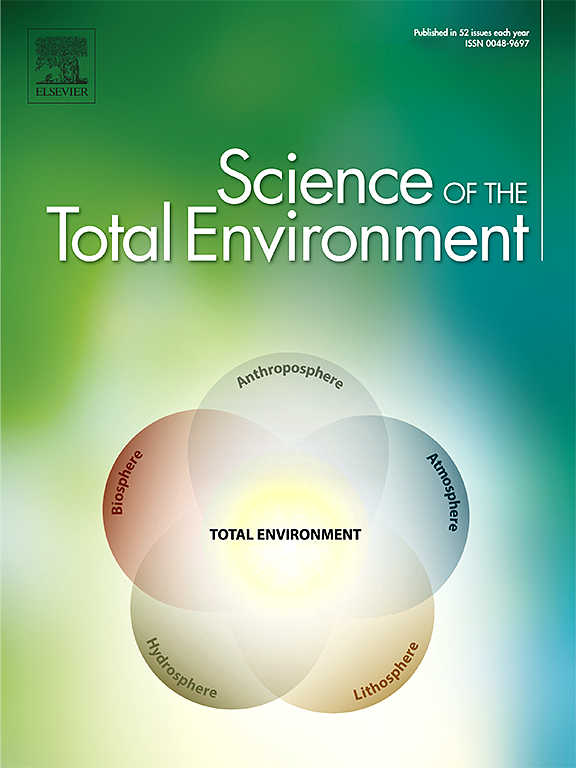Nonlinear influences of climatic, vegetative, geographic and soil factors on soil water use efficiency of global karst landscapes: Insights from explainable machine learning
IF 8.2
1区 环境科学与生态学
Q1 ENVIRONMENTAL SCIENCES
引用次数: 0
Abstract
Soil Water Use Efficiency (SWUE) represents a vital metric for assessing the relationship between carbon acquisition and soil moisture (SM) depletion in terrestrial ecosystems. However, the elucidation of time-lagged and cumulative effects, nonlinear influences, and indirect contributions of explanatory variables, including climate and vegetation characteristics, on SWUE in global karst landscapes remains limited. In this study, we analyzed the time-lagged and cumulative effects of climatic and biological factors on SWUE in global karst landscapes using the Autoregressive Distributed Lag Model. By comparing nine machine learning models, we further revealed the nonlinear effects, as well as the direct and indirect contributions of climatic, geographic, soil, and biological explanatory variables on SWUE across varying aridity, using the Random Forest Model, SHapley Additive exPlanations, Generalized Additive Model, and Partial Least Squares-Structural Equation Modeling (PLS-SEM). The findings suggested that precipitation and wind speed exert the most substantial time-lagged and cumulative impacts on SWUE in global karst landscapes, respectively. The Random Forest model outperforms eight other machine learning models, including CatBoost, LightGBM, and XGBoost, in accurately simulating SWUE. In global karst landscapes, SWUE was significantly affected by the positive contributions of evapotranspiration, leaf area index, and temperature, as well as the negative impacts of latitude and longitude. These influences exhibited varying degrees of nonlinearity across the aridity gradient. Using PLS-SEM based on the ‘geo-climatic-soil-biological’ cascade effect, it was found that gross primary production directly and significantly influences karst SWUE under both drought-prone and water-abundant conditions, significantly exceeding the impact of SM. Geographic, climatic, and biological factors indirectly influenced karst SWUE by affecting gross primary production. The impact of soil type, soil carbon and nitrogen content, and rootable depth on SWUE was minimal. This study enhances our understanding of carbon sinks and the water‑carbon cycle, providing valuable insights into resource use efficiency within karst environments.

求助全文
约1分钟内获得全文
求助全文
来源期刊

Science of the Total Environment
环境科学-环境科学
CiteScore
17.60
自引率
10.20%
发文量
8726
审稿时长
2.4 months
期刊介绍:
The Science of the Total Environment is an international journal dedicated to scientific research on the environment and its interaction with humanity. It covers a wide range of disciplines and seeks to publish innovative, hypothesis-driven, and impactful research that explores the entire environment, including the atmosphere, lithosphere, hydrosphere, biosphere, and anthroposphere.
The journal's updated Aims & Scope emphasizes the importance of interdisciplinary environmental research with broad impact. Priority is given to studies that advance fundamental understanding and explore the interconnectedness of multiple environmental spheres. Field studies are preferred, while laboratory experiments must demonstrate significant methodological advancements or mechanistic insights with direct relevance to the environment.
 求助内容:
求助内容: 应助结果提醒方式:
应助结果提醒方式:


